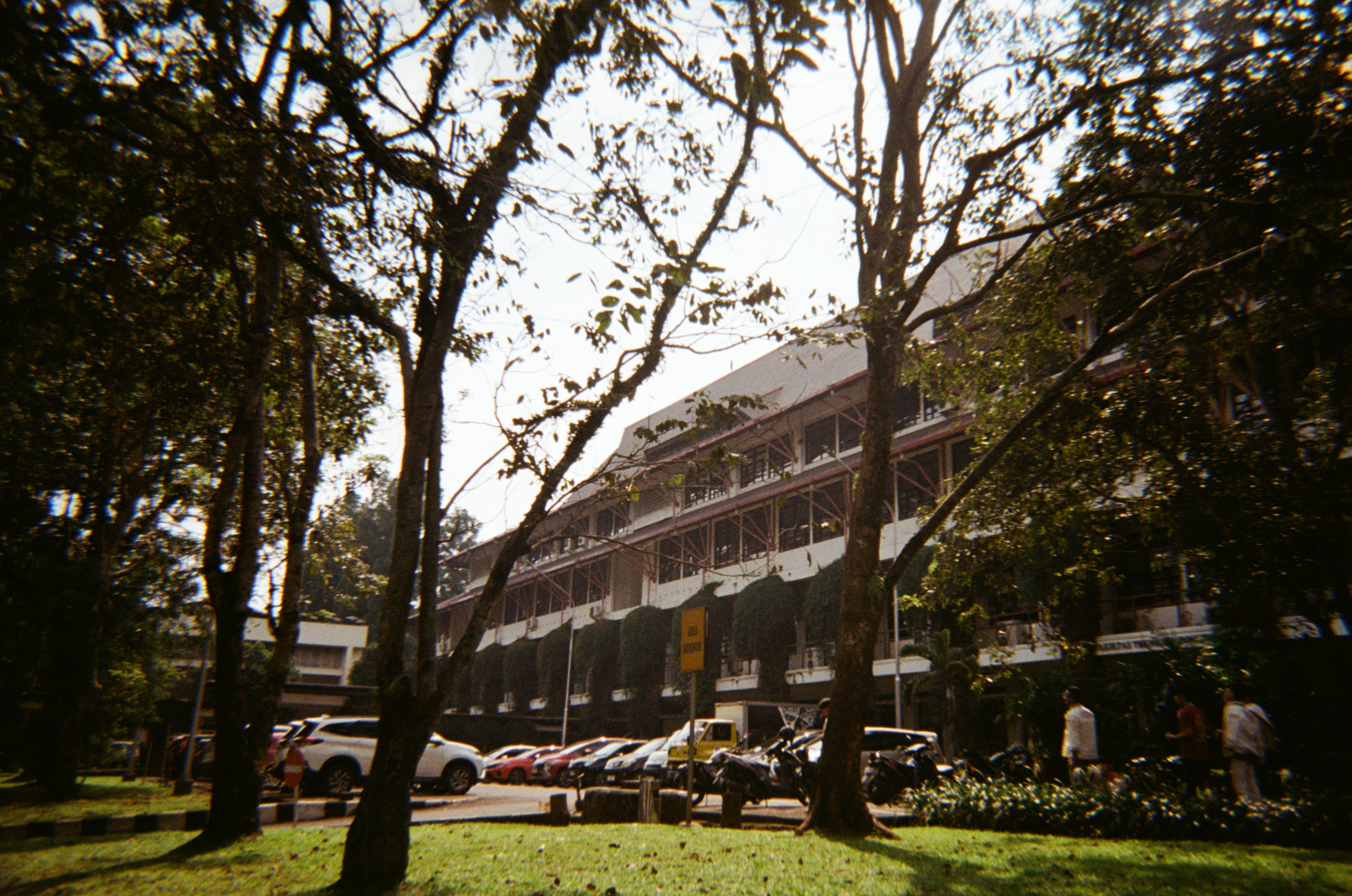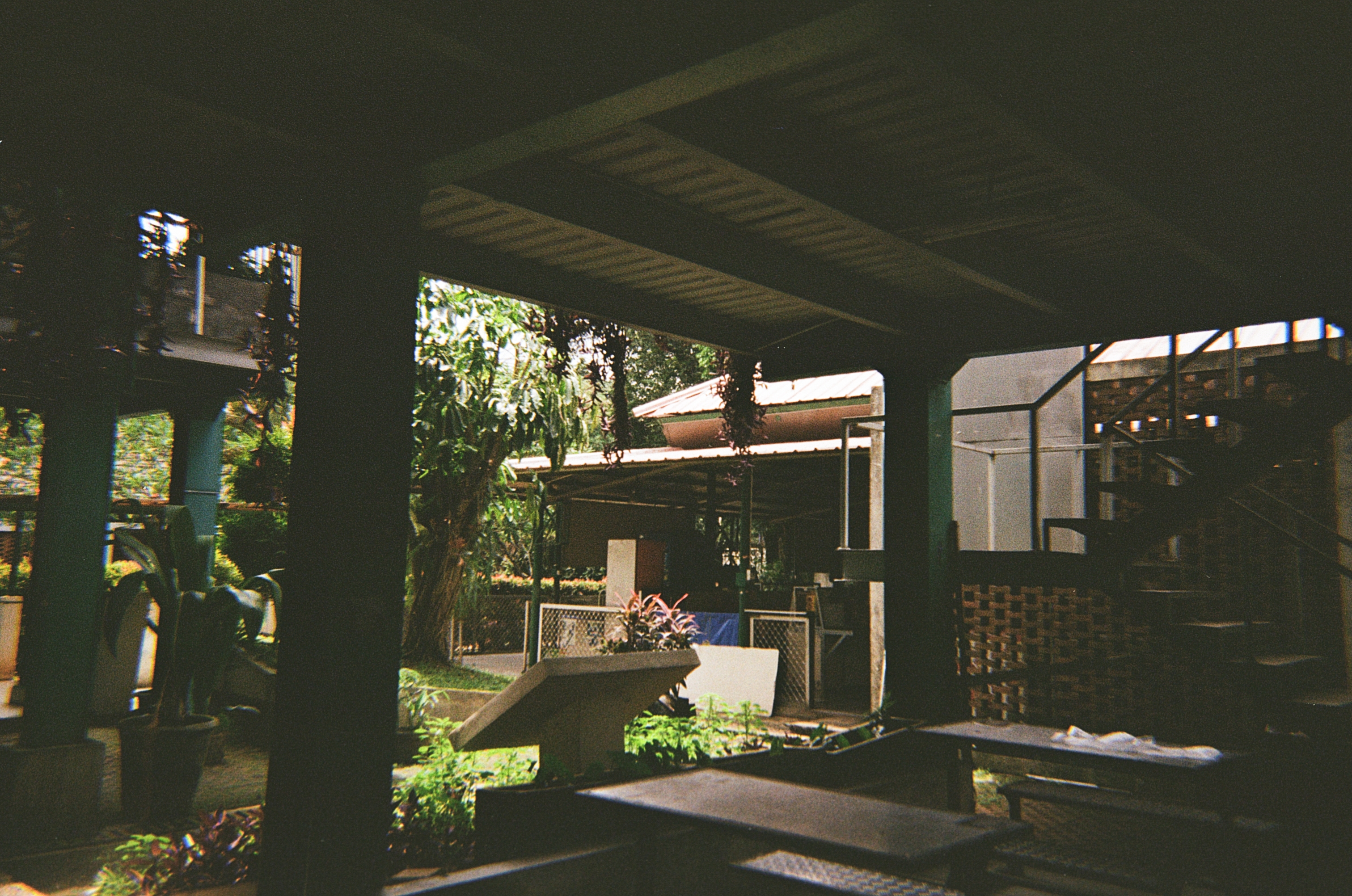Photography has always been more than just a hobby for me. In my early childhood, I was drawn to illustration. But over time, even with some practice, I realised I wasn’t particularly good at it. Granted, I probably didn’t practice enough. Still, I’ve always admired visual art. Thankfully, my dad shares that interest. He’s into photography too.

A shot of the ITB. Taken with Kodak Ultra F9 and Kodak Colorplus 200.
The Olympus OMD E-M5 was actually my dad’s camera. It was the first “professional” camera I ever got to use, and I still love it dearly. It was through that camera that I learned both the mechanics and the art of photography. Over time, though, it started to show its age. The battery began to fail, and replacements became increasingly difficult to find, even from third-party brands. Sometimes, it would just randomly stop working—often at the worst possible moments. So I finally decided to let it rest and get a camera of my own: the Lumix GH5.
The GH5 is mainly a video-focused camera. Technically, it’s a hybrid, but its features are heavily geared toward video. I used it a lot during high school and even into college, as my main creative interest at the time was videography. I’ve always felt that it’s easier to tell a story through moving images.
That said, my passion for photography never really disappeared. I still shoot photos from time to time. Over the years, I’ve developed a growing interest in retro aesthetics, especially analog photography. Since I only owned a digital camera—the GH5—I did my best to emulate the look and feel of film. Unfortunately, no matter how hard I tried, it was incredibly difficult to get it right. My attempts either didn’t come close to the subtle charm of real analog photos, or ended up looking overly edited and artificial.
Kodak Ultra F9
In early 2025, I finally got my hands on a real analog camera: the Kodak Ultra F9. It’s a reusable point-and-shoot camera, almost fully mechanical except for the flash, which needs a battery. It has a fixed f/9 lens and a shutter speed of 1/120s. You can’t change the focus either. Still, it turned out to be a surprisingly good camera. Its simplicity was actually a blessing. Because there were so few settings to tweak, I could focus entirely on the analog experience itself.
Since it’s my first time using an analog camera, naturally, I know nothing about it. Thankfully, the community have been immensely helpful by producing tutorials for newcomers. One notable example is embedded above. Huge thanks for Storeytree.
Once I had the camera, the next question was obvious: what film should I buy? After some quick research, I decided to try Fujicolor C200 and Kodak Gold 200. Both were commonly recommended for beginners—relatively affordable, but with solid character and exposure latitude.
Unfortunately, Kodak Gold 200 wasn’t available during my visit to a local camera store. So I picked up Kodak ColorPlus 200 as a substitute. I loaded it in and took a few shots on the way home.
Since this all happened around April 2024, I brought the camera with me to capture moments during the ITB April Graduation. I also ended up visiting the Universitas Indonesia campus not long after, so I took the opportunity to snap some photos there too.

A shot of the University of Indonesia campus. Taken with Kodak Ultra F9 and Kodak Colorplus 200.
Since I was still hyped about my new camera, I took a lot of pictures. Heck, I even managed to burn through an entire roll during the ITB April Graduation. After that, I loaded a roll of Fujicolor C200 and kept shooting.
At this point, I had never developed or scanned any of my photos. I had no idea whether they were correctly exposed, or even if I framed them properly. To tell you the truth, I even messed up rewinding my film and accidentally overexposed a few frames.
After developing and scanning both rolls, I discovered that most of my shots were total garbage. Some were underexposed. Other times, when I used the flash, I’d accidentally block part of it with my finger, leaving half the photo in darkness.
Nonetheless, hidden among those failed shots, I managed to capture a few good ones. Seen below is one such example.

A shot of the ITB April Graduation. Taken with Kodak Ultra F9 and Fujicolor C200.
Getting Serious: Enter the Minolta SRT-101
It wasn’t long before I felt constrained by the simplicity of the point-and-shoot. I craved more creative control. This led me to buy a Minolta SRT-101, a fully mechanical analog SLR camera paired with the classic 55mm f/1.8 MC Rokkor lens. I think I struck gold at that time, since I saw someone selling their Minolta for a mere IDR 700k, quite a bargain considering the condition. Barring some dents on the bottom of the body, it’s relatively flawless, cosmetic wise. The lightmeter is still ON. The viewfinder is good enough.
As I’m writing this post, it literally just arrived. So I haven’t had the chance to shoot with it yet. But one thing’s for sure: I’ll be taking a lot more photos going forward, especially now that I finally have more creative control in my hands.
Shooting analog is oddly comforting to me. After years of using digital cameras, I find that film gives me more freedom to make mistakes, ironically. I can embrace imperfections. In fact, sometimes I actively seek them out, much like the Japanese concept of Wabi-Sabi.
I’ll continue documenting this journey here on the blog, so stay tuned for more stories to come.